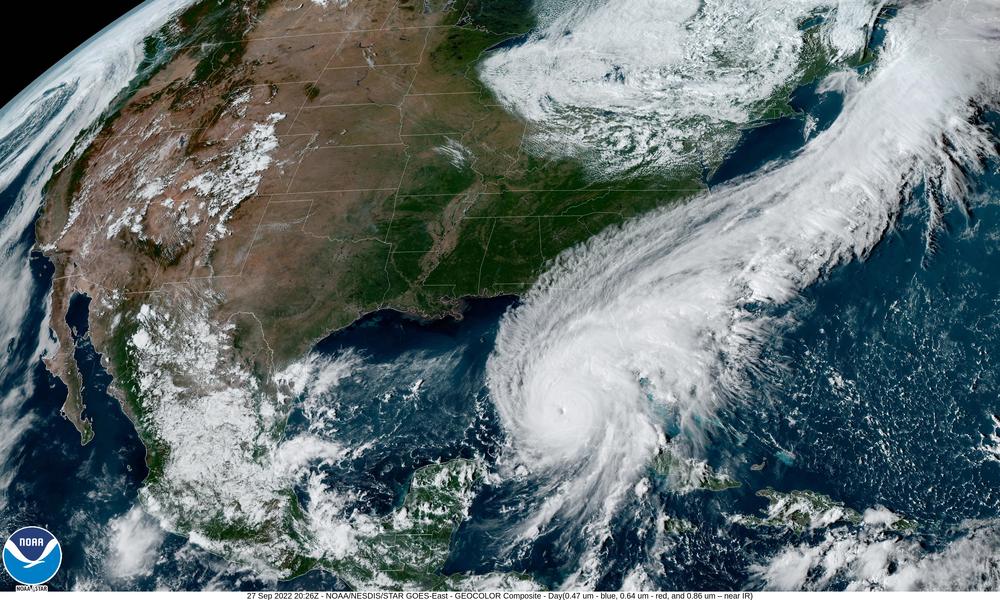
Caption
Hurricane Ian, as seen in a NOAA satellite image taken in September 2022, was among the recent hurricanes that researchers found had increased by one category because of climate change.
Credit: NOAA
LISTEN: New research draws a direct link between climate change and hurricane intensification, particularly during the recent past. GPB's Benjamin Payne reports.

Hurricane Ian, as seen in a NOAA satellite image taken in September 2022, was among the recent hurricanes that researchers found had increased by one category because of climate change.
Human-caused climate change intensified the vast majority of Atlantic hurricanes during the most recent five-year period of completed seasons, according to a new scientific study published Wednesday.
84% of hurricanes that formed between 2019 and 2023 saw their maximum wind speeds increase by an average of 18 mph due to climate change, researchers at the science nonprofit Climate Central found.
Among the impacted hurricanes, 30 became one category higher than they would have been without climate change, including Hurricane Ian, which hit South Georgia hard in 2022 after it tore through Florida as a historic Category 5 hurricane.
Lead researcher Daniel Gilford said at a Tuesday media briefing that, as greenhouse gas emissions from carbon dioxide and other fossil fuels warm the ocean, rising sea-surface temperatures in turn provide the fuel for hurricanes' rapid intensification.
“Because we know that sea surface temperatures are increasing, we know that the speed limit at which a hurricane can spin is going up — and hurricane intensities in the real world are responding,” said Gilford, who noted that waters in the Gulf of Mexico are between 2 and 4 degrees Fahrenheit higher than they would otherwise be without climate change.
Although the study did not examine the 2024 Atlantic hurricane season — as it does not officially end until Nov. 30 — a separate analysis by Gilford's team extended their research methods to the hurricanes seen so far this year.
That analysis found all 11 to have been intensified by between 9 mph and 28 mph because of elevated sea surface temperatures.
In particular, Hurricane Debby — a major rain event which drenched Southeast Georgia as a slow-moving system in early August — would have only topped out as a tropical storm had it not been for climate change, according to the analysis.

Hurricanes from the ongoing 2024 season and the extent to which they intensified due to climate change.
“Another thing that's very surprising is we had two Category 5 storms in 2024, and our analysis shows that we would have had zero…without human-caused climate change,” said Gilford, referring to Hurricanes Milton and Beryl. “So, there's really this impact on the intensity of the storms that we're experiencing in the real world on a day-to-day basis.”
The study adds to a growing body of evidence that climate change is strengthening hurricanes, even if the overall number of tropical systems remains the same.
“We've known for a long time that we will see more intense hurricanes if we continue to burn fossil fuels,” said Imperial College London climatologist Friederike Otto, who also advises Climate Central. “But now, we can actually see it and we can quantify it, and we have confidence in the numbers.”
Most other “attribution studies” into climate change and hurricanes have focused solely on rainfall, she added, leaving much to be explored in the future regarding wind speed and other metrics.